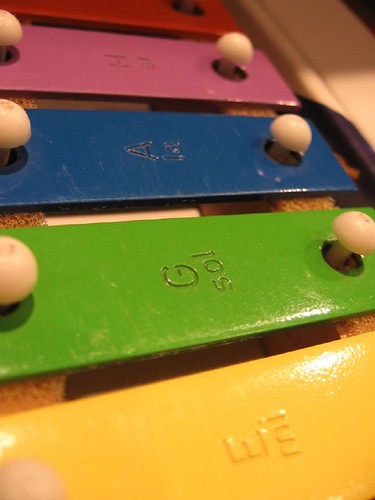It's sad to me, as an educator, that ear-training, sight-singing, and rhythmic/melodic/harmonic dictation isn't taught more, especially at the high school levels. A favorite professor of mine always said,
"If you can't clap or sing it, you can't play it."
If your district doesn't offer aural theory, here are some things you can do on your own:
- Learn solfege and apply it to simple melodies, before tackling that district solo you're working on.
- Got a song stuck in your head (known as an ear-worm)? Instead of trying to get rid of it, try notating it on staff paper. (use something like Finale Notepad to check your work!)
- Another fun experiment: play an "A" (440Hz) on a piano, tuner, or other instrument (see my iPod Touch post for another option). Then, go about your day. At lunch, hum the pitch. Are you close? If not, figure out how far off you were. Do this for a few weeks, and you'll have as close to perfect pitch as you can get. :)

photo credit: wrestlingentropy





No comments:
Post a Comment